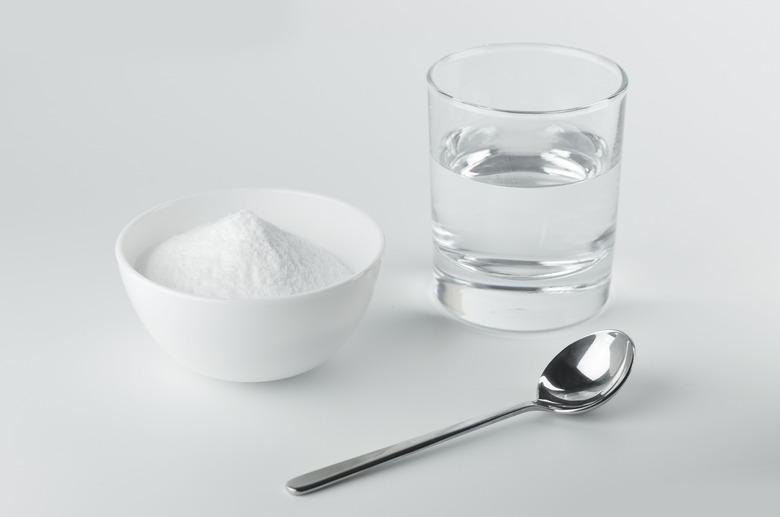How To Remove Rust From A Stainless Steel Sink
Despite the name, stainless steel sinks are not completely stain- and rust-proof. While a well-maintained stainless steel sink isn't likely to rust, wet metal items left in it can leave behind rusty spots and rings. These stains are generally easy to remove with products already on hand in the kitchen.
How Rust Happens on Stainless Steel
How Rust Happens on Stainless Steel
For a stainless steel sink in fairly good shape, rust spots found in or on the sink are usually from other metal items. Cast-iron cookware and food cans left in the sink are two major culprits that can cause rust spots to show up on an otherwise rust-free sink.
Another issue occurs when the sink itself is damaged. Steel can rust, but stainless steel contains chromium as one of its components, and this helps keep rust from developing . When oxygen reaches chromium, a reaction occurs, creating a protective passive layer of chromium oxide over the entire surface area of the stainless steel. Harsh chemicals such as ammonia can damage that protective layer, leading to rust if not remedied. On the bright side, chromium oxide is self-repairing, so simply washing out the sink out with mild dish soap and water is usually enough to remove the problematic chemicals. This causes newly exposed chromium to react with oxygen, creating protective chromium oxide once again.
Beneficial Baking Soda Paste
Beneficial Baking Soda Paste
A simple paste made from baking soda is an excellent rust and spot remover for a stainless steel sink. It's also ideal for cleaning the sink any time, as this powder offers enough abrasive power to remove problem spots without harming the sink.
- For a small spot, mix a little water into a tablespoon or two of baking soda to create a paste.
- Rinse the sink out, or wipe it down with a wet paper towel to moisten the area that needs a rust treatment.
- Apply the paste to the affected area.
- Scrub the area gently with a soft-bristled brush, such as an old toothbrush or fingernail brush.
- If the spot isn't fading completely, scrub with a dish-scrubbing scrub sponge or nylon scrub pad listed as safe for stainless steel. Rinse the area.
If the spot remains or if the affected area covers more than just a small spot, sprinkle baking soda liberally over the rusty areas and let it sit for 30 minutes before scrubbing.
The Oxalic Acid Method
The Oxalic Acid Method
Oxalic acid occurs naturally in many food plants such as spinach, parsley and potatoes. It's also an excellent rust remover, used in cleaning products such as Bar Keepers Friend. To use a specialty rust-removing product on your sink, look for one that's not very abrasive and listed as safe for stainless steel, such as Bar Keepers Friend Soft Cleanser. Wet the affected area of the sink, apply a small squirt of the cleaner, then rub the spot with a sponge. Rinse it off within a minute of cleaning, then dry the sink.
To use oxalic acid straight from the source, slice a potato, then sprinkle the cut side with salt or baking soda. Rub the cut side of the potato over the rust stain. Wait a minute or two, rinse the area clean, then dry the sink. If the stain persists, let the potato sit atop the stain for a few more minutes.
Simple Preventive Maintenance
Simple Preventive Maintenance
Following sink manufacturer's recommendations will keep that sink looking its best for years. While one brand may offer slightly different suggestions than the next, the basics come down to avoiding harsh chemicals and abrasives that may damage the metal.
- When cleaning up, never use any type of metal scouring pads, as these can scratch the metal and compromise the protective layer that helps prevent rust. These may also leave behind tiny metal particles that become trapped within the sink scratches, leading to rusty spots.
- Scrubbing in the direction of the polishing marks on the metal helps keep the stainless steel looking good.
- Avoid using bleach or cleaners containing chlorides or harsh chemicals. These can damage the stainless steel. If using bleach to clean other items in the sink, thoroughly rinse the sink afterwards, then dry it with a towel.
Tips for a Sparkling Sink
Tips for a Sparkling Sink
A well-maintained sink can look almost as good as new if you take a few moments to care for it after use.
- Always rinse the sink with warm or hot water after use. Rinsing helps remove soap residue and other materials left behind from washed items.
- Drying the sink afterwards, although not necessary, helps prevent water spots.
- A light sprinkle of baking soda works well as a weekly cleaner while the sink is damp. Use a sponge to scrub any spots or residues in the sink, then rinse the sink with a little white vinegar. The foaming action helps disinfect the sink and also removes mineral deposits. Rinse with plain water afterwards.
- Wipe the faucet and edges of the sink with white vinegar as well. This helps remove water spots, making the metal sparkle.
- Polish the sink with half a lemon, coating the cut side of the lemon with cream of tartar. This combination also helps remove rusty spots. Rub the cut side over the sink, then buff the sink with a cloth. Rinse and wipe out the sink afterwards.
- Rubbing just the peel over the sink also helps polish it while emitting a fresh scent.


